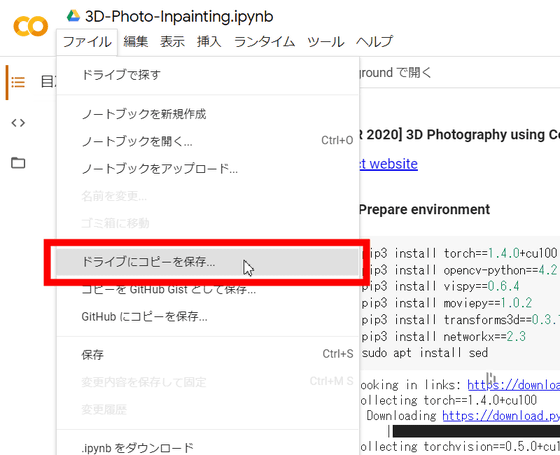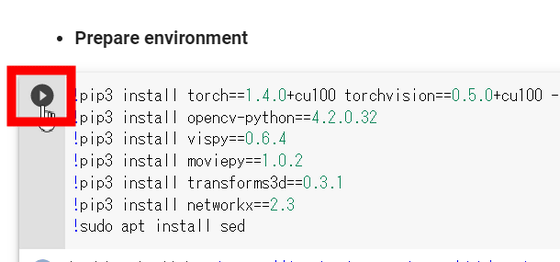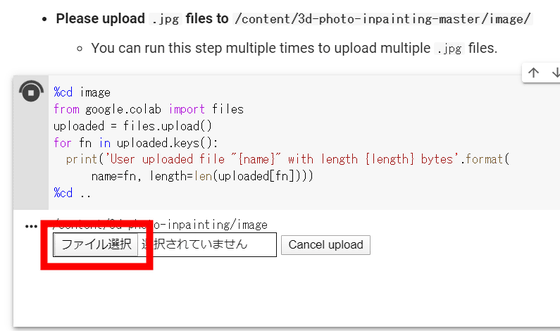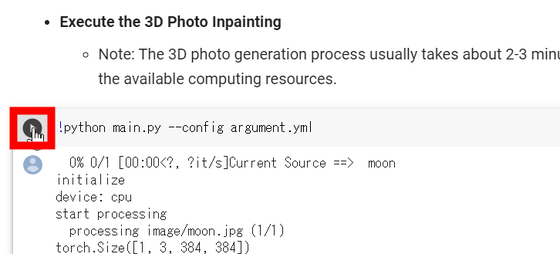A paper that makes it possible to easily create sophisticated 3D photos from images will be published, it is also possible to actually generate 3D photos

3D Photography using Context-aware Layered Depth Inpainting
https://shihmengli.github.io/3D-Photo-Inpainting/
The method of generating 3D photos from RGB-D images was developed by Meng-Li Shih , a graduate student of National Tsinghua University and an internship at Virginia Tech, and Shih-Yang Su , a graduate student of Virginia Tech. They are Johannes Kopf, who works at Facebook Research, and Jia-Bin Huang , an assistant professor at the Virginia Tech. 4 people '3D Photography using Context-aware Layered Depth Inpainting ( context-aware of the layered depth in painting that 3D pictures using)' paper has published.
By making full use of the technology announced in the paper, it is possible to generate a 3D photo that can produce depth including multiple layers from the original photo. The basic principle is that Layered Depth Image (LDI) is composed of foreground and background layers with texture and depth information, and color and depth information is repeatedly synthesized for each pixel of the image by a method according to the spatial condition. It uses a learning-based image interpolation model that can be used.
You can see what kind of 3D photo can actually be generated by watching the following movie.
Family 3D Photo Slideshow-3D Photo Inpainting-YouTube
The movie below shows that 3D photographs have been made from historical photographs using this 3D photography technology.
Visualizing History in 3D-3D Photo Inpainting-YouTube
Below is a movie comparing the existing 3D photography technologies ' SynSin ' and ' 3D Ken Burns ' with the 3D photography technology developed by Su et al. With SynSin and 3D Ken Burns, even if the background is blurred or collapsed, Su's 3D imaging technology has succeeded in converting the 3D image to a very fine level.
2.5D Motion Parallax-3D Photo Inpainting-YouTube
In addition, people who actually tried using 3D photography technology also appeared.
The published 'Artificial Intelligence estimates depth' is interesting, so give it a try. Both live-action and illustrations are OK
— Tetsu (@metatetsu) April 16, 2020
(How to use in tree)
3D Photography using Context-aware Layered Depth Inpainting https://t.co/i5xmsEAM3p pic.twitter.com/RloHdZqRua
You can see that you can move it to Glinglin.
If you try the technique of making a 3D image from a single photo and moving it with an illustration instead of a photo ... it moves more than you imagined and shocked ... !!! https://t.co/T5Orp0K9kS pic .twitter.com / VUhcztcXup
— Konogi Yoshio @ Hentai IT (@yoshiwo_konogi) April 16, 2020
To actually make a 3D photo, access 3D-Photo-Inpainting.ipynb while logged in to your Google account, and click 'Save a copy in drive ...' in 'File'.

Click the play button under 'Prepare environment'.

Then click the play button under 'Download script and pretrained model'.

Click the play button under 'Switch off off-screen rendering'.

When you're done, click the play button under 'Please upload'.

Then click 'Select File' and select the image you want to turn into a 3D photo.

Finally, click the play button under 'Execute the 3D Photo In painting'.

When all is done, click 'Update' in the left menu.

The 3D photo output in the 'video' folder in '3d-photo-in painting' is saved in MP4 format.

So, the 3D photos output in movie format are as follows. The ' bonito colorful leaflets and Inaniwa style udon ' that I had eaten at Otoya was more three-dimensionally expressed.
Trying to generate a 3D photo from an image looks like this-YouTube
Please note that the only image format that can be used is JPEG .
Related Posts:







